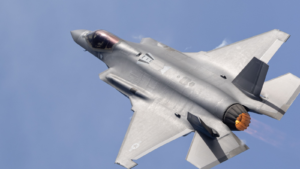
Space stocks are becoming popular companies for investors to grow their money in. We’ve seen business celebrities like Jeff Bezos and Richard Branson lead the way with their own private spacecraft in recent years, and now ordinary people are looking to the stars to see if they can get their piece of the action.
The space stocks on this list cover companies that do everything from launching satellites to producing industrial supplies for organizations like NASA. These companies are expected to grow in prominence as spaceflight becomes an increasingly lucrative growth sector.
So, if you are looking for space stocks to multiply your original investment, here are the best companies worth considering.
Rocket Lab USA (RKLB)

Rocket Lab USA (NASDAQ:RKLB) is engaged in launching satellites and developing hypersonic test missiles.
RKLB presents an interesting case for investors as one of our space stocks to buy. Despite its negative cash flow, Rocket Lab’s upcoming Neutron rocket promises to increase revenue with larger payloads, which may improve its profit per launch.
Looking ahead, RKLB forecasts a Q4 revenue between $65-69 million with improved margins, and for Q1 2024, revenue expectations are between $95-105 million, indicating a trajectory of growth and operational scaling.
There are two good reasons to suggest that RKLB is undervalued and, thus, may have multibagger potential. First, despite an increase in share count and a challenging year with negative returns on equity and assets, the company’s enterprise value is lower than its market cap, which suggests its stock could rise explosively in the future.
Finally, the company’s solid current and quick ratios suggest a healthy short-term financial position, and its substantial revenue growth forecast hints at strong future performance.
Lockheed Martin (LMT)

Lockheed Martin (NYSE:LMT) is deeply involved in various space projects, including NASA’s Artemis Program and the Orion spacecraft.
LMT stock’s recent deployment of 10 satellites for the Space Development Agency’s mission this year is a bullish indicator for LMT stockholders. The increased demand for Lockheed’s satellites is evidenced by its contract to build additional satellites for future tranches. This suggests the space sector will continue to grow LMT’s top and bottom lines.
LMT’s reorganization of its space business in May into four focused sectors — commercial, civil space, national security space and strategic and missile defense — is another bullish sign for potential investors. LMT is positioning itself to capitalize on a nearly $30 billion space backlog, and this organization will help it tap into this potential.
Finally, the company’s trailing P/E ratio of 16.31 and forward P/E ratio of 16.53 are lower than the industry average, indicating that the stock may be priced modestly relative to its earnings.
Spire Global (SPIR)

Spire Global (NYSE:SPIR) is known for its strong quarterly performance and significant contract wins in the space industry. SPIR’s successful reverse stock split and improved management team give it multibagger potential.
SPIR reported robust Q3 2023 performance, which saw a 34% year-over-year revenue increase to a record $27.3 million, surpassing expectations. Furthermore, SPIR’s management team is confident in the company’s trajectory, expecting positive cash flow from operations and adjusted EBITDA in the near term.
Analysts also have a strongly positive outlook on SPIR, with a consensus rating of “Strong Buy” from 3 analysts. The 12-month average price target is $13.64, indicating a potential increase of 173.90%, with a high estimate of $20 and a low estimate of $9.92
As a rule of thumb, there is no potential for gain without proportionate risk. And the same is true with SPIR. It has a price-to-sales ratio of 1.03 times earnings, which is low relative to its revenue growth. However, the stock has declined by over 50% in the past year, which makes it a falling knife.
But for those who have sufficient risk tolerance, SPIR could deliver the multibagger returns they have been waiting for.
On the date of publication, Matthew Farley did not have (either directly or indirectly) any positions in the securities mentioned in this article. The opinions expressed are those of the writer, subject to the InvestorPlace.com Publishing Guidelines





